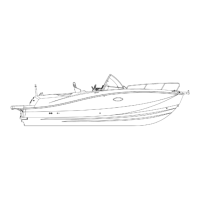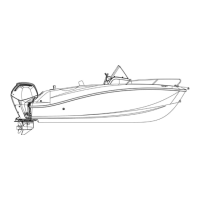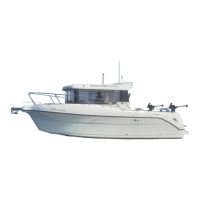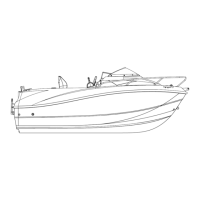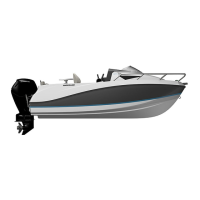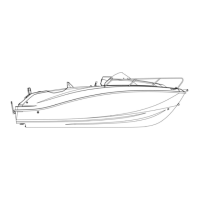Quicksilver 675SD — General Informaon
3
4. Passenger Locaons
When people are on the working deck area for anchoring, mooring, or in emergencies, they must be
holding on and be posioned as to prevent falling overboard.
5. Design Categories
There are four design categories of boats based upon their ability to withstand wind and water
condions:
Category A – Designed for winds that may exceed wind force 8 (Beaufort scale – 40 knots) and a
signicant wave height of 4m and above.
Category B -- Designed for winds that include up to wind force 8 (Beaufort scale – 40 knots) and
signicant wave height up to and including 4m.
Category C – Designed for winds that include up to a wind force 6 (Beaufort scale – 27 knots) and
a signicant wave height up to and including 2m.
Category D – Designed for winds that include up to a wind force 4 (Beaufort scale – 16 knots) and
a signicant wave height up to and including 0.3m, with occasional waves of 0.5m maximum
height.
Refer to your product capacity plate for the design category of your boat.
Gelcoat surfaces are slippery when wet. Use extreme
cauon when walking on wet surfaces.
Never occupy the working decks while the boat is
underway.
Be aware of your foong while the boat is underway.
Slipping or falling could result in serious injury or death,
especially if the boat is in moon or in rough seas. Keep the
accommodaon clean, so if movement is necessary, it will
be free of obstrucon.
Do not aempt to operate boat in severe weather
condions. Death or serious injury can occur. Get to shore
before the weather turns bad.
Working deck area to be used during normal operaon
Working deck area to be used during anchoring, mooring and emergency operaon
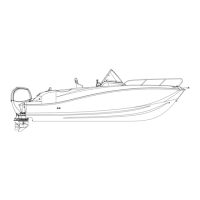
